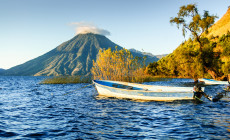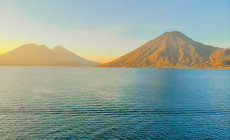-
Latin America
Latin America
- Countries (hidden space)
- Galapagos & Ecuador
- Guatemala
- Mexico
- Panama
- Peru
- Popular Attractions
- Machu Picchu
- Inca Trail
- Easter Island
- Galapagos Islands
- Patagonia
- Rio de Janeiro
- Iguazu Falls
-
Africa
Africa
- Spacer Africa
- South Africa
- Zimbabwe
- Popular Attractions
- Cape Town
- Okavango Delta
- Sossusvlei Dunes
- Victoria Falls
- The Kruger
- The Garden Route
- Masai Mara
-
Asia & Middle East
Asia & Middle East
- Asia
- Borneo (Malaysia)
- Cambodia
- India
- Japan
- Middle East
- Jordan
- Spacer Asia
- Laos
- Sri Lanka
- Uzbekistan
- Vietnam
- Popular Attractions
- Taj Mahal
- Lion Rock (Sigiriya)
- Angkor Wat
- Ha Long Bay
- Kyoto
- Petra
-
Destinations
- Latin America
- Argentina
- Bolivia
- Brazil
- Chile
- Colombia
- Costa Rica
- Galapagos & Ecuador
- Guatemala
- Mexico
- Panama
- Peru
- Asia
- Borneo (Malaysia)
- Cambodia
- India
- Japan
- Laos
- Sri Lanka
- Uzbekistan
- Vietnam
- Middle East
- Jordan
- Southern & East Africa
- Botswana
- Kenya
- Namibia
- South Africa
- Zimbabwe
- Contact Us
-
About
About
Llama Travel provides high quality holidays at the lowest possible prices.
99% recommend us Lower prices - guaranteed Financially protected by ATOL
Lake Atitlán
Lake Atitlán is beautiful volcanic lake in the highlands of Guatemala, ringed by volcanoes and step hills. The lake is surrounded by small traditional Maya villages with the largest settlement being the town of Panajachel. The lake is very deep with the maximum depth of at least 320m (the bottom has yet to be completely sounded), and the lake measures 18km by 12km at its widest point. There is no natural drainage; the lake instead has underground drainage to the Pacific coast.
Lake Atitlán is popular with visitors due to the traditional communities surrounding the lake. In nearly all of the villages traditional dress is still worn, and residents are fiercely proud of their traditional culture. The Maya people are mainly from two groups, the Kaqchikel and the Tz'utujil. When the Spanish arrived in Guatemala the Kaqchikel allied themselves with the Spanish to help defeat the Tz'utujil, who where their traditional enemies. After this the Kaqchikel refused to pay any tributes to the Spanish, and they themselves were conquered by the Spanish.
One of the towns on Lake Atitlán’s shore, Santiago Atitlan, is most commonly associated with the folk saint of Maximon. The origins of Maximon are not very well understood. One idea is that he a catholic priest who looked after aboriginals in the 17th century. Another belief is that he is the incarnation of the Maya god of sexuality. The home of Maximon changes every year, and Maximon plays an important role in the Easter celebrations.







